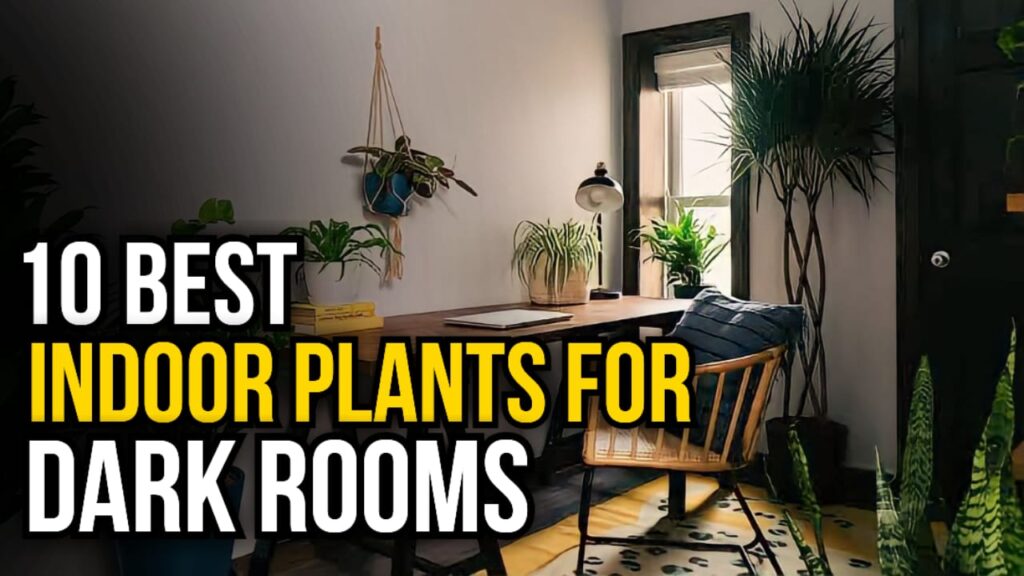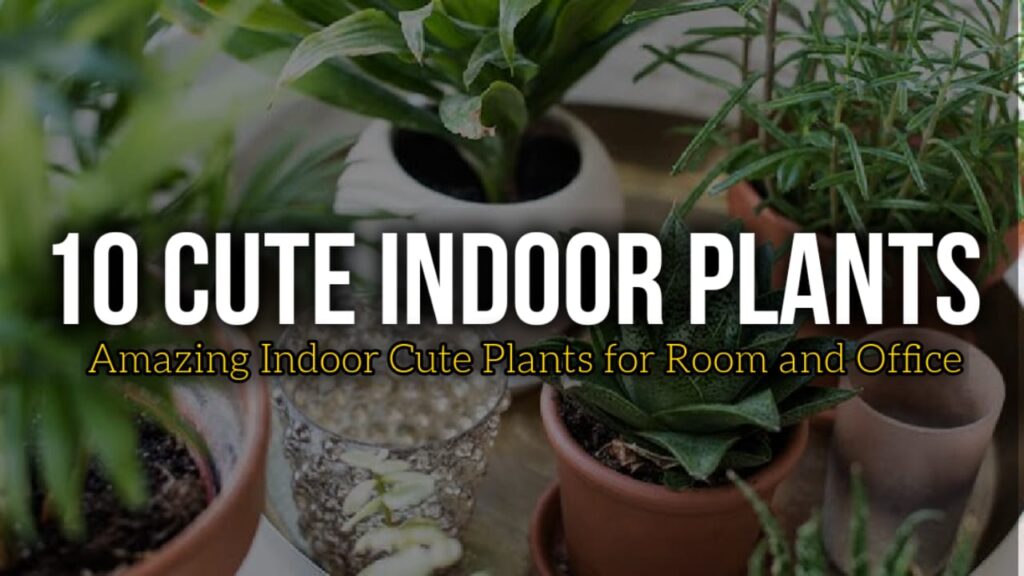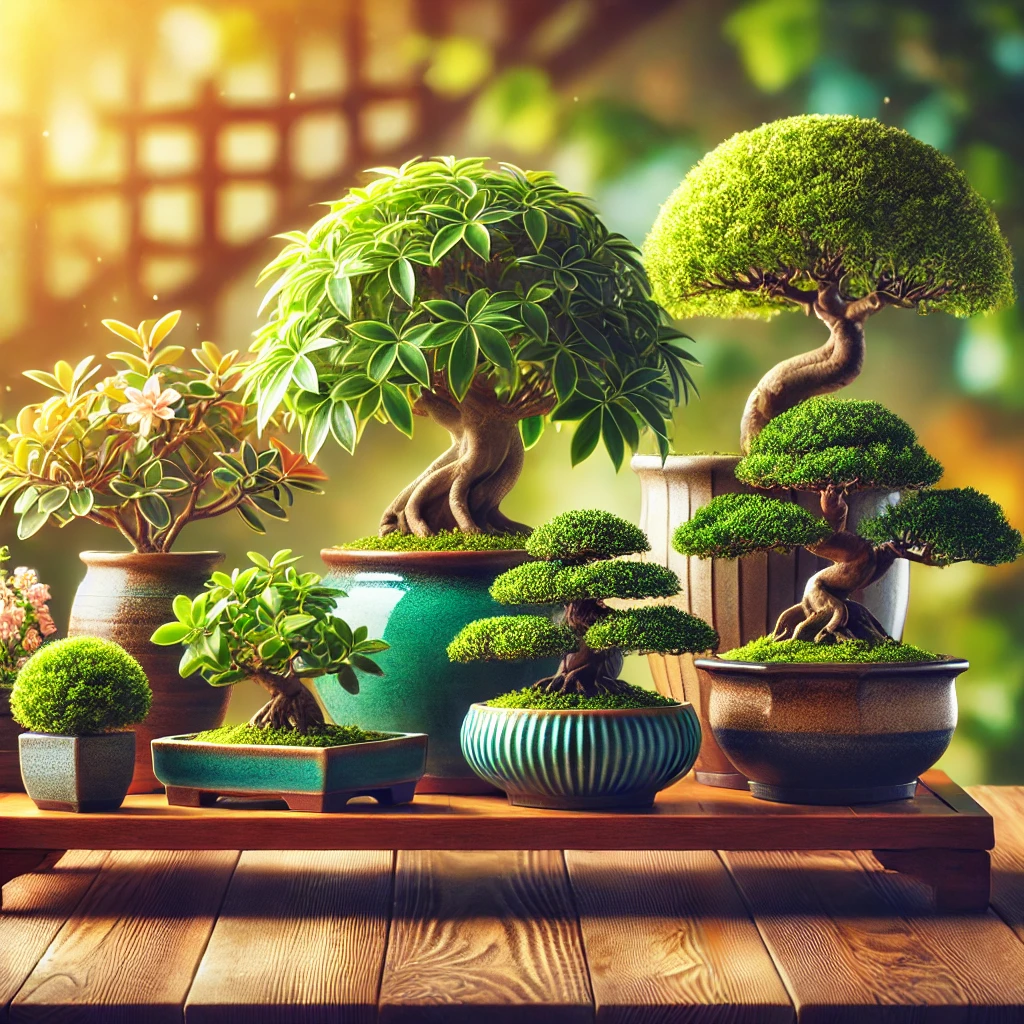Does your love for indoor plants begin to drain your wallet? Well, not anymore! You don’t have to spend a lot of money on indoor plants. Because in this article, I am going to tell you the best cheap indoor plants.
As long as you take good care of them, these cheap and best indoor plants will last a lifetime. Furthermore, I will tell you how to take care of an indoor plant so it thrives.
With these cheap indoor plants, you will also enjoy good interior design, breathe fresh air, and a pleasant mood.
Last but not least, I will also tell you how you can get free indoor plants, so make sure to read the whole article. Now, let’s take a look at the 15 best cheap indoor plants in India that will not break your budget.
15 Best Cheap Indoor Plants For Your Living Room or Office
The following cheap indoor plants for sale are excellent options if you want to enhance the aesthetics of your living room.
Moreover, you can buy cheap indoor plants online for your workplace to reduce stress and breathe healthier air.
Furthermore, NASA studies have shown that with an indoor plant next to you, you are more productive and relaxed.
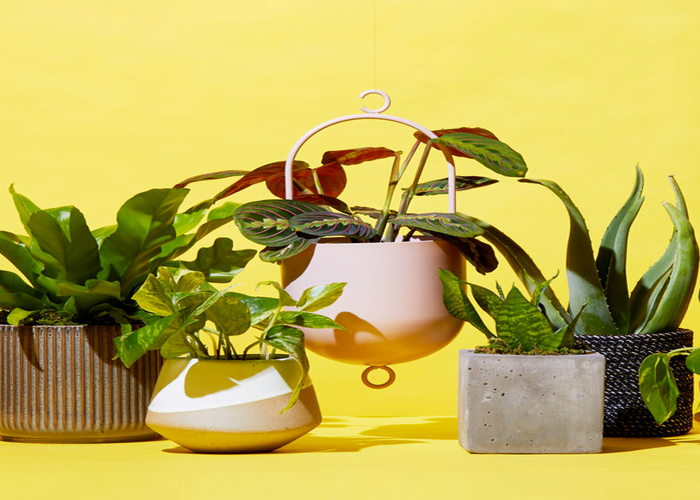
1. Pothos

Bring nature indoors with pothos lush and vibrant leaves. They are easy to care for. Your indoor space will instantly look more lively with a pop of green.
2. Snake plant

With stunning snake plants, you can add style and simplicity to your home. The perfect addition to any home, it requires little maintenance and purifies the air.
3. Peace lily
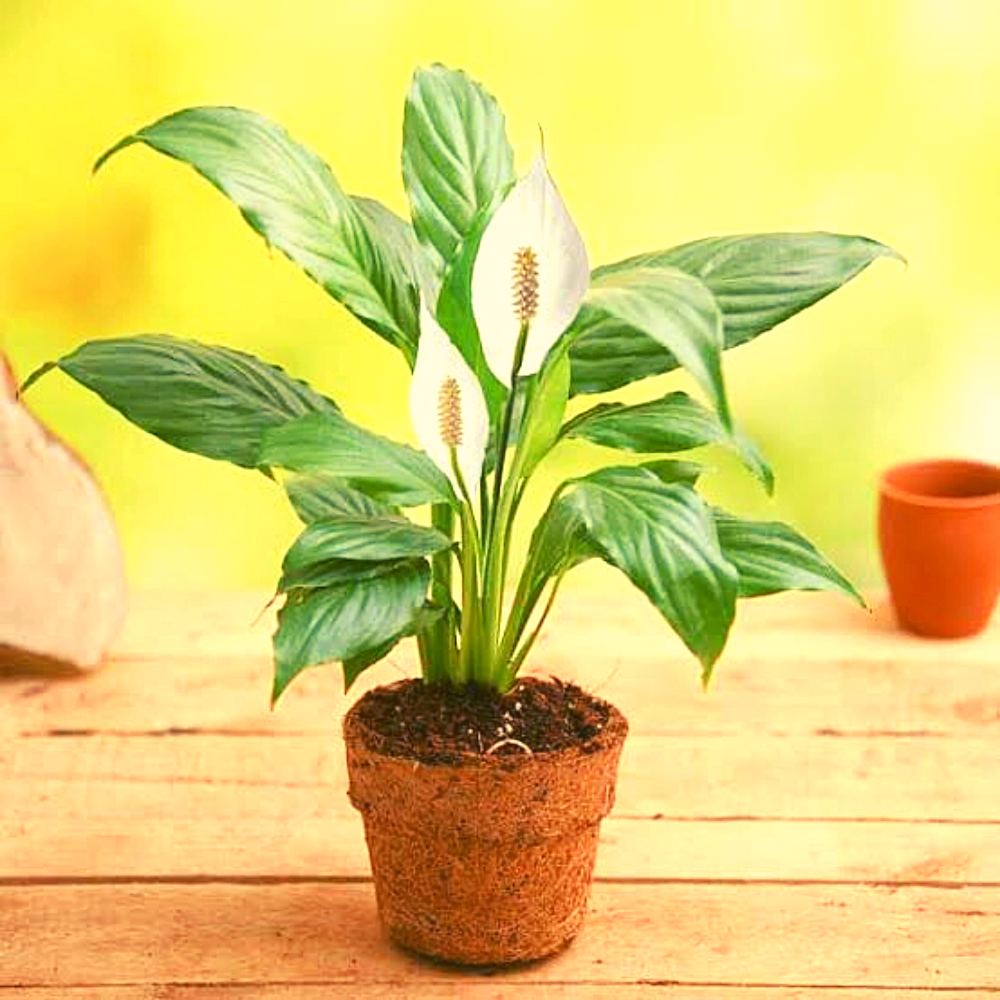
Enjoy peace in your home with a beautiful peace lily plant. You can add a touch of elegance to any room with this easy-to-care plant. Its fresh, vibrant blooms are waiting for you.
4. Philodendron

With a gorgeous philodendron plant, your home will be filled with tropical beauty. Bring the outdoors inside with this low-maintenance air purifier.
5. Anthurium

Adding colour and life to your space is easy with an anthurium plant. With its vibrant, long-lasting blooms, it’s a great way to liven up any room.
6. Aloe vera

Aside from adding a touch of greenery, it also has medicinal properties. So, don’t miss out on the benefits of this incredible plant.
7. Chinese Money plant

Make your home prosperous and lucky with the Chinese money plant. This plant is perfect for adding a touch of charm to your home due to its unique coin-shaped leaves.
8. Spider plant

With its beautiful arching leaves, this plant looks wonderful on a tabletop, a shelf, or hanging. Besides being a beautiful home addition, Spider Plants also purify the air.
9. English ivy

English ivy plants are like daily Valentines. It has heart-shaped, green to purple variegated leaves. It’s a versatile plant that grows well in a variety of conditions.
10. Bromeliads

Brighten up any room with vibrant bromeliads. Colour and life are brought to any space with its stunning, long-lasting blooms.
11. Dumbcane
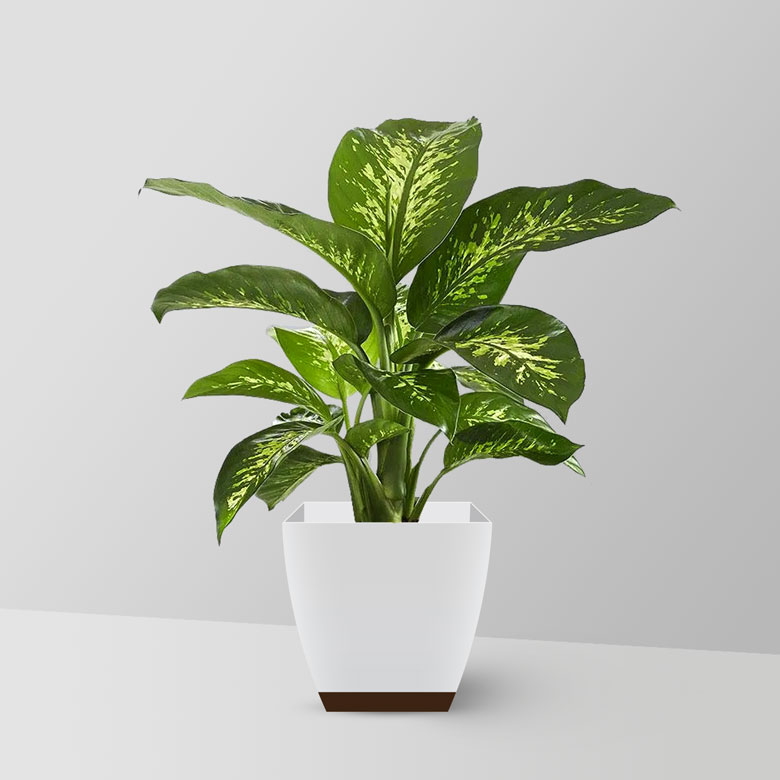
Dumbcane plants add exotic beauty to any room. A unique, variegated plant known for its air-purifying properties.
12. Chinese Evergreen

Bring some greenery into your home with the Chinese Evergreen plant. Easy to care for and air-purifying, it’s the best cheap indoor plant.
13. Prayer plant

Enjoy nature and tranquillity in your home with this beautiful prayer plant. With its unique foliage and relaxing qualities, it creates a peaceful atmosphere at home.
14. ZZ plant

If you are too busy to take care of your plants, this is the perfect plant for you. You can make yourself lucky and attract good fortune by keeping ZZ plants in your house.
15. Areca palm

Give your house a little tropical flair with a stunning Areca Palm plant. It’s known for its lush, green foliage and air-purifying powers.
Now, it’s time to learn more about the care of these cheap indoor plants. By understanding how to care for these plants, you will be able to get their freebie plants easily.
Best Cheap Indoor Plants
1. Pothos
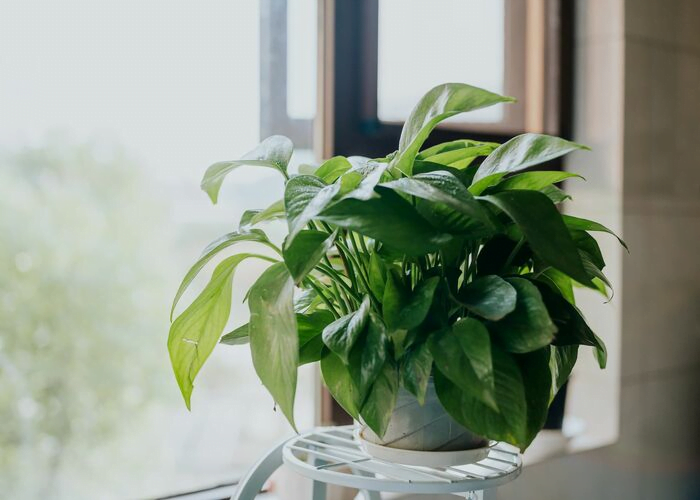
Common Name: Pothos, Golden Pothos, Devil’s Vine, Devil’s Ivy
Botanical Name: Epipremnum aureum
Plant Type: Vine
Mature Size: 20–40 ft. long, 3–6 ft. wide
Known as Devil’s Ivy, pothos is a tropical vine plant that adapts well to indoor conditions. The shiny, heart-shaped leaves add beauty to your home.
Also, they come in a variety of natural and cultivated varieties. Thus, giving you enough options to choose from.
Additionally, pothos is a great place to start if you have never taken care of indoor plants. They are easy plants to care for and a great way to add a touch of green to your home.
Due to their low light tolerance, pothos plants are great for bathrooms or offices. Although pothos thrives in a variety of lighting conditions, they are not suited to direct sunlight.
| Light | Bright indirect light |
| Water | Every 1-2 weeks |
| Soil | Well-draining |
| Temperature | 65°F-85°F |
| Humidity | 50-70% |
2. Snake plant

Common Name: Snake plant, mother-in-law plant, mother-in-law’s tongue
Botanical Name: Dracaena trifasciata
Plant type: Evergreen perennial.
Mature Size: 6 inches to 12 feet tall in the wild and around two feet as a houseplant.
It is easy to recognize snake plants by their sword-like leaves. Almost like artificial foliage, the leaves grow upright.
Often, home decorators use snake plants as they are attractive and easy to grow. Moreover, they only need a small amount of water.
A snake plant is both beautiful and useful, providing a number of health benefits. The Health benefits of snake plants include reducing allergies, removing toxic pollutants from the air, and boosting mental well-being, etc.
Additionally, it is very easy to propagate the snake plant through the stem-cutting method. You can grow the stem in water or soil.
| Light | Bright, indirect light |
| Water | Water fortnightly |
| Soil | Free-draining soil mix |
| Temperature | 60-75 °F |
| Humidity | 40-50% |
3. Peace lily
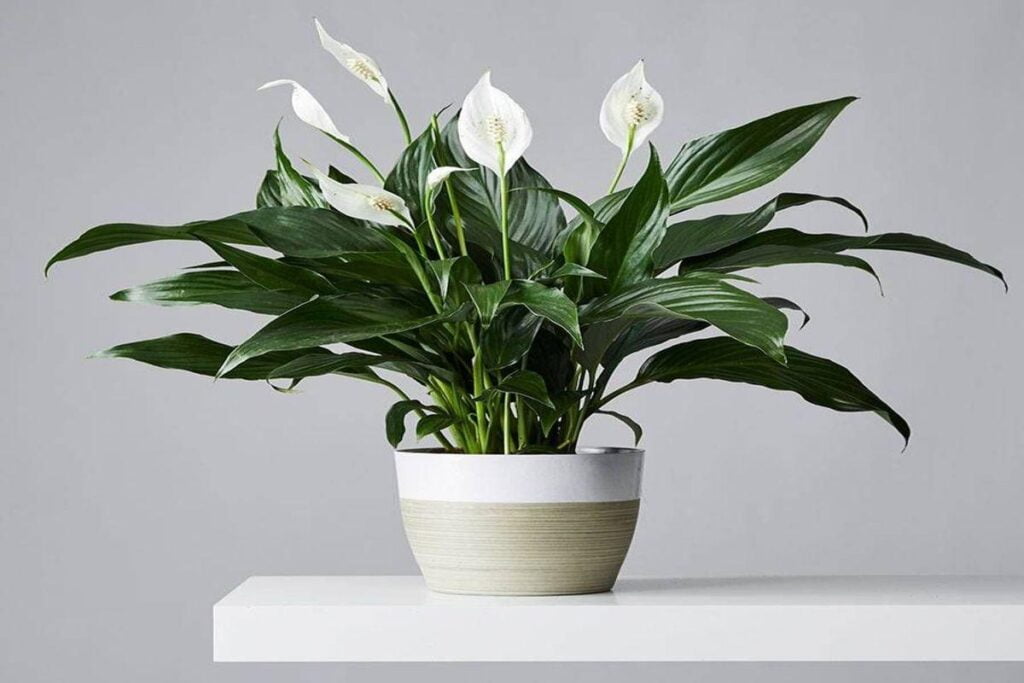
Common Name: Peace lily, Spath lily
Botanical Name: Spathiphyllum spp.
Plant Type: Perennial
Mature Size: 1–4 ft. tall, 1–4 ft. wide
The peace lily is an excellent houseplant for the home or office. Dark green leaves and white flowers are the most common characteristics of these plants.
Not only do these plants brighten up living spaces, but they are also excellent for cleaning the air.
The peace lily is excellent at breaking down and neutralizing toxic gases like formaldehyde and carbon monoxide.
| Light | Low to bright, indirect sunlight |
| Water | Weekly watering |
| Soil | Consistently moist soil |
| Temperature | 68- 85 °F |
| Humidity | 75% or above |
4. Philodendron

Common Name: Philodendron
Botanical Name: Philodendron spp.
Plant Type: Perennial
Mature Size: 1–20 ft. tall, 1–6 ft. wide
Toxicity: Toxic to both pets and people.
The philodendron is regarded as one of the easiest indoor plants. They are known for their heart-shaped leaves and trailing vines.
Philodendron is especially useful for indoor environments because it filters gaseous toxins. Additionally, they can grow 10 feet long in good indoor conditions.
This cute plant is also a great freebie from friends (if they have any). You can easily propagate them by asking for the stem cuttings! It is possible to grow them in water as well.
| Light | Indirect or curtain-filtered sunlight |
| Water | Water every 1-2 weeks |
| Soil | Loose potting soil that’s rich in organic matter. |
| Temperature | 75 -85 °F |
| Humidity | Above 50% |
5. Anthurium

Common Names: Anthurium, tailflower, flamingo flower.
Botanical Name: Anthurium spp.
Plant Type: Herbaceous, perennial
Mature Size: 12-18 in. tall
Toxicity: Toxic to people and pets.
A delightful houseplant, Anthurium is known for its waxy, coloured bracts and contrasting deep green foliage.
Anthurium is a common houseplant, so if you see one in a friend’s or neighbour’s house, ask them for offsets or pups. You can either grow the offsets in soil or in water and soon you will have a free indoor plant.
| Light | Bright but indirect light. |
| Water | Once a week. |
| Soil | Coarse, well-draining potting mix |
| Temperature | 60°-85°F |
| Humidity | 50% or more |
6. Aloe Vera

Common Name: Aloe vera
Botanical Name: Aloe barbadensis miller
Plant Type: Succulent.
Mature Size: 12-36 in. tall
Toxicity: Toxic to both humans and dogs.
When it comes to indoor medicinal plants, aloe vera is the best choice. There has been a long history of using this succulent as medicine. It is well known that aloe vera plants are healing plants.
It has antibacterial, antiviral, and antiseptic properties. Because of this, it helps heal wounds and treat skin problems.
The gel of aloe vera has long been known to relieve sunburn and heal wounds. Additionally, it is easy to maintain this cheap indoor plant.
| Light | 6 hours of direct sunlight |
| Water | Every 3 weeks |
| Soil | Well-draining potting mix |
| Temperature | 65-85°F. |
| Humidity | Can handle dry air without extra humidity |
7. Chinese Money plant
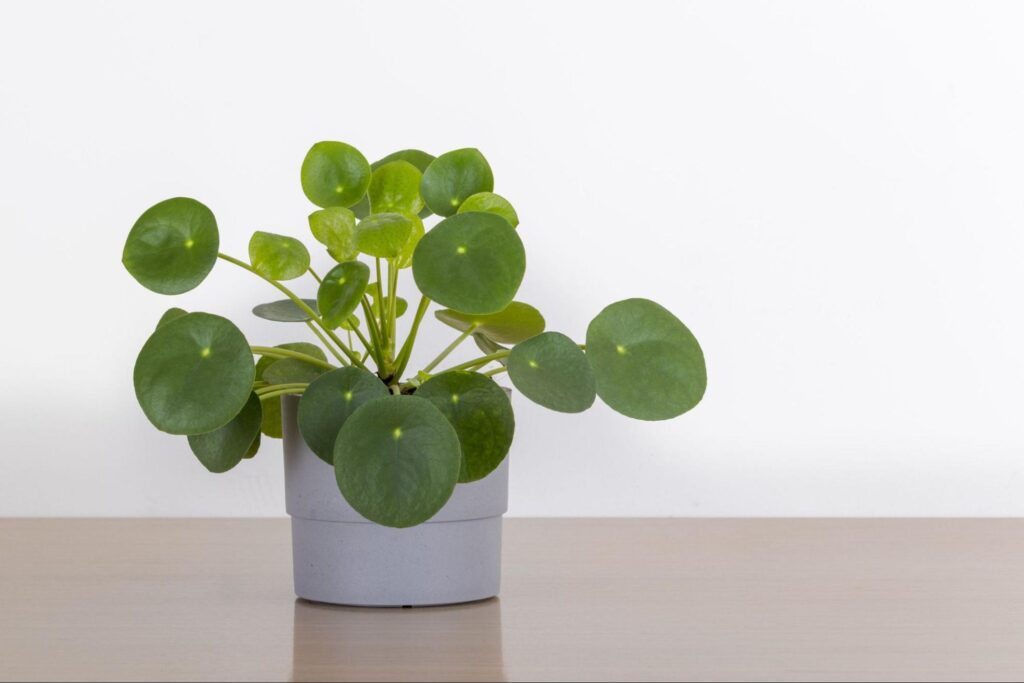
Common Name; Pancake plant, coin plant, UFO plant.
Botanical Name: Pilea peperomioides
Plant Type: Perennial
Mature Size: 12 in tall
Toxicity: non-toxic to cats and dogs.
This green beauty, also known as Pilea Peperomioides, is one of the most popular plants in the world. It is a true beauty to watch this extraordinary little plant grow. Its rounded leaves are perfectly shaped to add a bit of interest to your indoors.
As this plant produces new ones by itself, you can fill your home with good luck plants. Whenever it grows baby plants in the bottom of the pot, take them out and plant them again.
| Light | Indirect sunlight |
| Water | Weekly |
| Soil | Well-drained potting soil. |
| Temperature | 55°F. |
| Humidity | 50 to 75% |
8. Spider plant
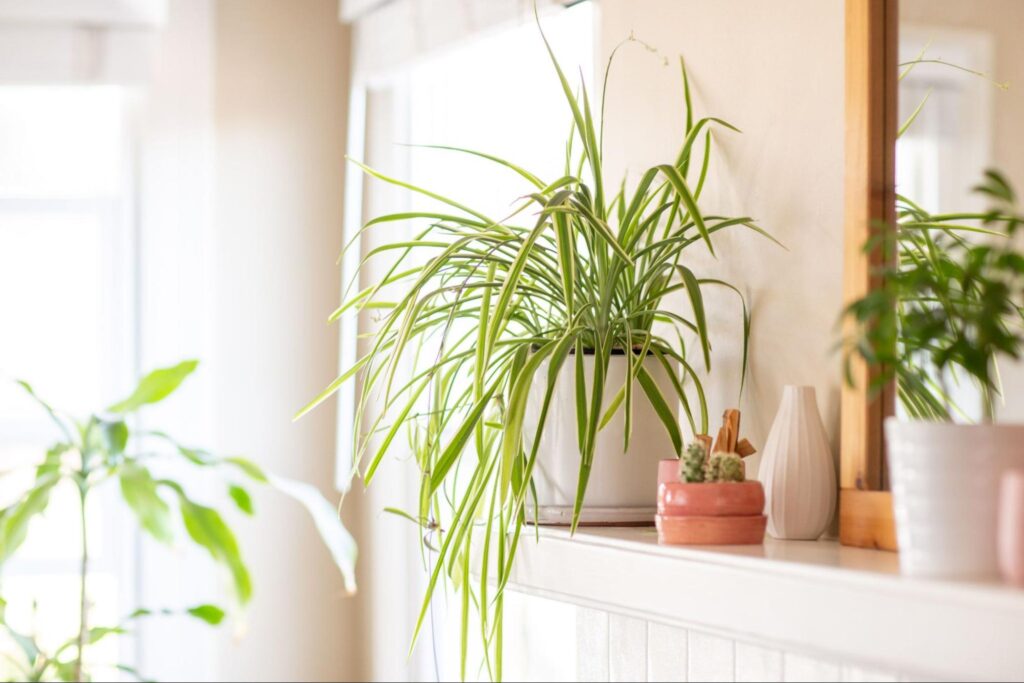
Common Names: Spider plant and ribbon plant
Botanical Name: Chlorophytum comosum
Plant Type; Herbaceous, perennial
Mature Size: 1–2 ft. tall and wide
Toxicity: Non-toxic to pets and humans.
Even though the plant has a creepy name, spider plants are among the most popular indoor plant. If you can provide warm temperatures and humid air, these tropical perennials will grow indoors under less-than-ideal conditions.
With its lovely arching leaves, this plant looks stunning on a tabletop, a shelf, or as a hanging plant. As a healthy addition to your home, the Spider Plant is also known for its air-purifying properties.
Moreover, this cheap indoor plant is one of the fastest-growing plants and can be planted at any time of the year.
| Light | Bright to moderate indirect sunlight. |
| Water | Once a week |
| Soil | Well-draining potting mix |
| Temperature | 70 -90°F |
| Humidity | 50-60% |
9. English Ivy

Common Name: English ivy, common ivy.
Botanical Name: Hedera helix
Plant Type: Evergreen climbing vine
Mature Size: trails and extends as much as possible
Toxicity: Toxic to both pets and people.
It’s like getting a Valentine every day when you have an English ivy plant. It has heart-shaped, variegated leaves that are purple to light green.
Moreover, English ivy is a versatile houseplant that can grow in a wide variety of situations. You can grow ivies in hanging baskets, at the base of other houseplants, or in their own pots
From the existing plant, you can grow several English ivies for free. Cut a stem with at least two leaves, dip the ends in rooting hormone, and set it in potting mix or water in a glass.
| Light | Bright indirect light |
| Water | Once per week |
| Soil | Well-draining soil |
| Temperature | 65 – 85°F |
| Humidity | Above 40% |
10. Bromeliads

Common Name: Bromeliad
Botanical Name: Bromeliaceae genera
Plant Type: Perennial
Mature Size: Depends on genera and species
Toxicity: Harmless to dogs and cats.
There is no fuss involved in caring for bromeliads at all. They are tough, fun to look at, and don’t need much attention.
If you love the beauty of ornamental flowers of this air-purifying houseplant, then ask your friend for bromeliad pups! Simply separate them from the mother plant and multiply them at home.
| Light | Bright, indirect light, |
| Water | Once a week |
| Soil | Barky airy mix |
| Temperature | 70-90 ℉ |
| Humidity | 40-60% |
11. Dumb Cane

Common Names: Dieffenbachia, dumb cane
Botanical Name: Dieffenbachia spp.
Plant Type: Herbaceous, perennial
Mature Size: 3–10 ft. tall
Toxicity: Toxic to pets.
Adding a tropical look to the room is easy with dumb cane plants. There are several cultivars available, most with variegated leaves, cream, or green leaves with speckles, splotches, or loose stripes.
A dumb cane plant is mostly grown for its foliage; however, when it flowers, it has a bloom similar to a peace lily.
| Light | Bright, indirect sunlight |
| Water | Once or twice a week |
| Soil | Potting soil rich in peat and well drained. |
| Temperature | 62–80°F. |
| Humidity | 60% |
12. Chinese Evergreen
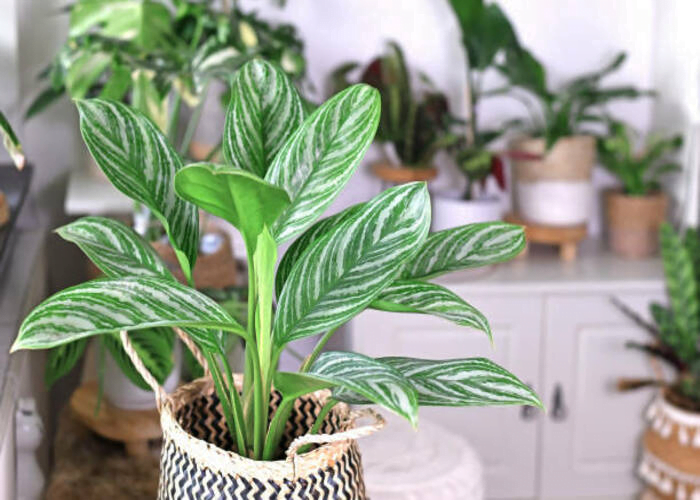
Common Name: Chinese evergreen, Poison Dart Plant
Botanical Name: Aglaonema commutatum
Plant Type: Herbaceous
Mature Size: 1–3 ft. tall
Toxicity: Harmful to pets and people.
A Chinese evergreen is characterized by large, narrow, glossy oval leaves on short stems, and it blooms in spring or summer.
With its colour variations ranging from dark green to silver to red, the Chinese evergreen adds personality to any home.
Chinese evergreens require minimal effort in providing the proper growing conditions (light, temperature, humidity, etc.). It is one of the most durable indoor plants that tolerate poor light, dry air, and drought.
You can easily get one for free if someone in your family or friends has Chinese Evergreen. The plant naturally reproduces itself by growing suckers beneath the surface of the soil. So, just remove one and plant your new one!
| Light | Indirect light |
| Water | Keep the soil moist all the time |
| Soil | Well-draining potting mix. |
| Temperature | 65-80 ºF |
| Humidity | 60 and 70% |
13. Prayer Plant
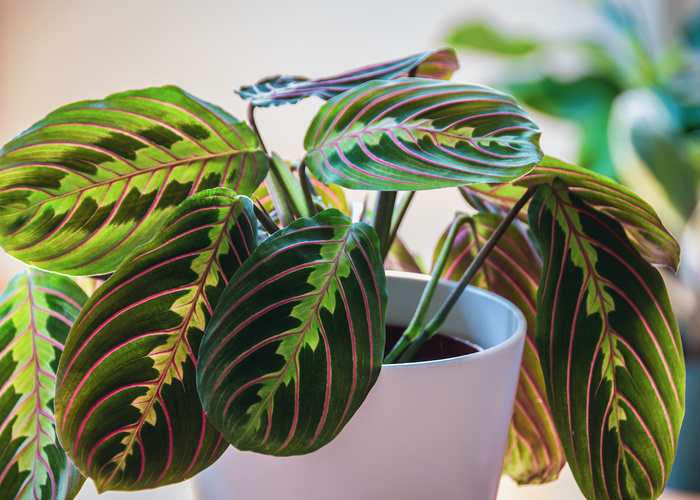
Common Name: Prayer plant
Botanical Name: Maranta leuconeura
Plant type: Herbaceous
Mature height: 6-12 inches tall.
Toxicity: non-toxic to cats and dogs.
There is something unique about prayer plants, especially their foliage with feathered and painterly veins.
With their bold foliage, Prayer Plants look great on window sills, mantles, or shelves in need of a little colour. Moreover, in the evening, Prayer Plants fold their leaves similar to folded hands in prayer.
The plant grows easily, has fun foliage, and is a hardy indoor plant, so it can become quite successful for you!
Often grown in hanging baskets, prayer plants can also grow horizontally along a tabletop or other surface. As the prayer plant is a slow-growing plant, it won’t grow out of control no matter where you plant it.
| Light | Bright, indirect light |
| Water | Once or twice a week |
| Soil | Regular potting soil |
| Temperature | 65 – 70°F. |
| Humidity | Above 60% |
14. ZZ plant
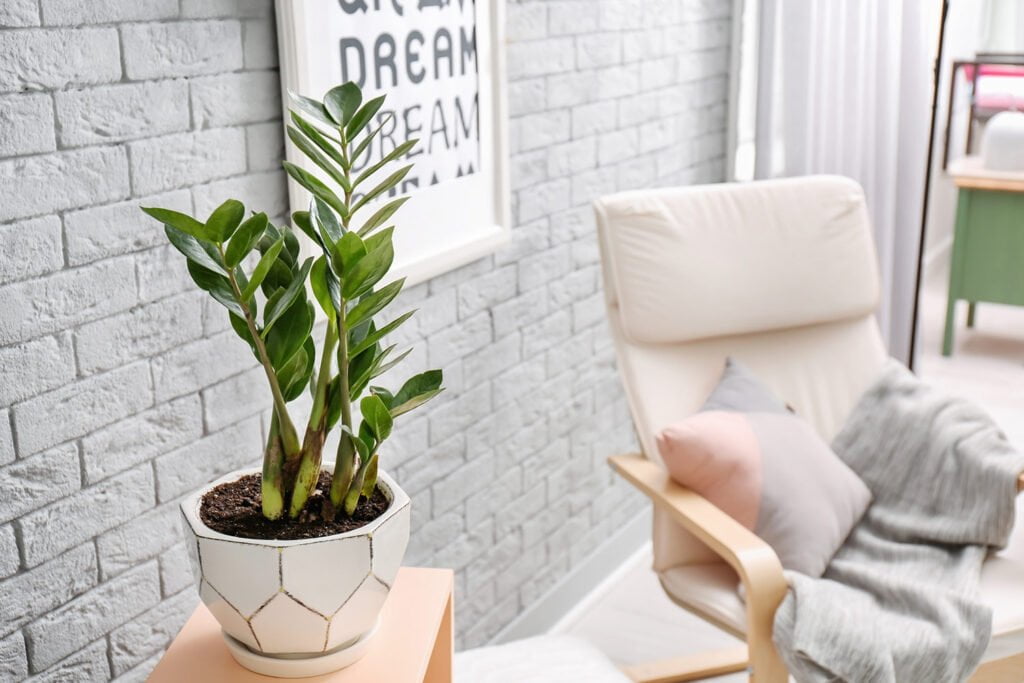
Common Name: Zanzibar gem, eternity plant
Botanical Name: Zamioculcas zamiifolia
Plant Type; Perennial
Mature height: 2-4 ft. tall
Toxicity: Toxic to pets and people.
This is the perfect plant for busy workers who do not have time to care for their plants. There is almost no way to damage ZZ plants. Even when neglected and exposed to low light for months, it will still look great.
Often, ZZ plants are mistaken for fake plants due to their glossy leaves and ability to thrive even under neglect.
As per Feng Shui, ZZ plants must be grown indoors as they attract positive energy. Also, there’s a lot of feng shui belief that this plant can bring wealth and growth. So, if you keep ZZ plants in your house, they can bring you good fortune and make you lucky.
| Light | Lots of indirect light |
| Water | Every 2-3 weeks |
| Soil | Well-draining potting mix |
| Temperature | 65°F-75°F |
| Humidity | 40-50% |
15. Areca Palm
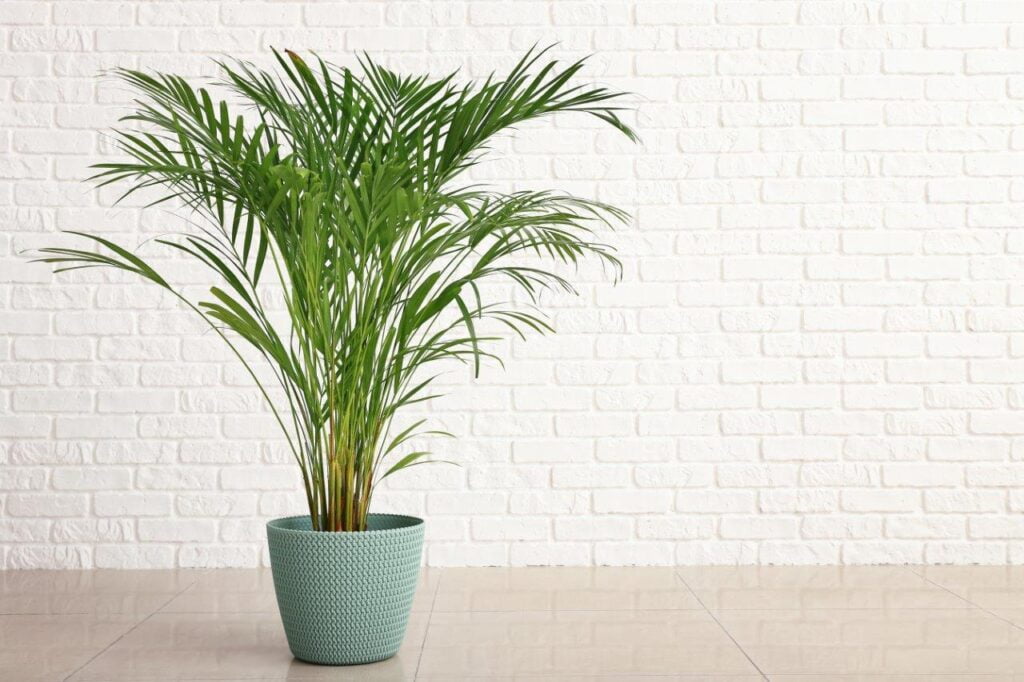
Common Names: bamboo palm, yellow palm
Botanical Name; Dypsis lutescens
Plant Type: Perennial
Mature height: six to seven feet tall.Toxicity: Non-toxic to both humans and animals.
There is no doubt that Areca palms are one of the most widely used palms for brightening up interiors. It has feathery fronds that arch upward and have up to 100 leaflets each.
They have smooth, sometimes golden trunks that look like bamboo clumps. Also, like bamboo leaves, these plants have narrow, full leaves. A big, bold plant like this is hard to ignore.
Furthermore, Areca palms are good for humidifying the air and are great air purifiers, removing toxins and pollutants.
As per NASA, Areca palms eliminate airborne toxins such as formaldehyde, xylene, and toluene, which are known to damage your lungs.
| Light | Bright, indirect light |
| Water | Once every 7 to 14 days |
| Soil | Well-draining potting soil |
| Temperature | 65-75°F |
| Humidity | 40-60% |
FAQs
Q1. What is the cheapest indoor plant to grow?
Ans. Spider plants, snake plants, pothos, and Chinese money plants are among the cheapest indoor plants to grow.
Q2. Where can I find cheap indoor plants?
Ans. Online or at your local nursery, you can buy cheap indoor plants.
Q3. What is the easiest indoor plant to care for?
Ans. ZZ plants, snake plants, spider plants, and philodendrons are easy to grow indoors.
Q4. How can I save money on buying indoor plants?
Ans. Check online, go to garden centres, nurseries, and florists, or ask your neighbour for seeds, pups, or offsets to save money on indoor plants.
Conclusion
With these cheap indoor plants, you can add some extra style to your home without emptying your wallet. You can also get some of the mentioned indoor plants for free. Simply ask your friends or relatives for the offsets and you will have your own free plant.
There are also some plants that are easy to propagate, such as snake plants, so you can have multiple plants from the same one.
There is no need to worry about maintaining these cheap indoor plants. Your minimal attention and care will ensure that they thrive.
Help your friends and family save money on indoor plants by sharing this article. Also, please feel free to ask any questions in the comments below.
Related Articles
- 10 Best Indoor Plants for Dark Rooms
- 10 Best Liquid Fertilizer for Indoor Plants
- 10 Best Plants for Restaurants That Will Enhance Your Restaurant’s Atmosphere
- 10 Best Small Plants for Balcony in India
- 10 Best Soil for Indoor Plants 2023 | Potting Soil For Indoor Plants No Bugs
- 10 Cute Indoor Plants for Room and Office


